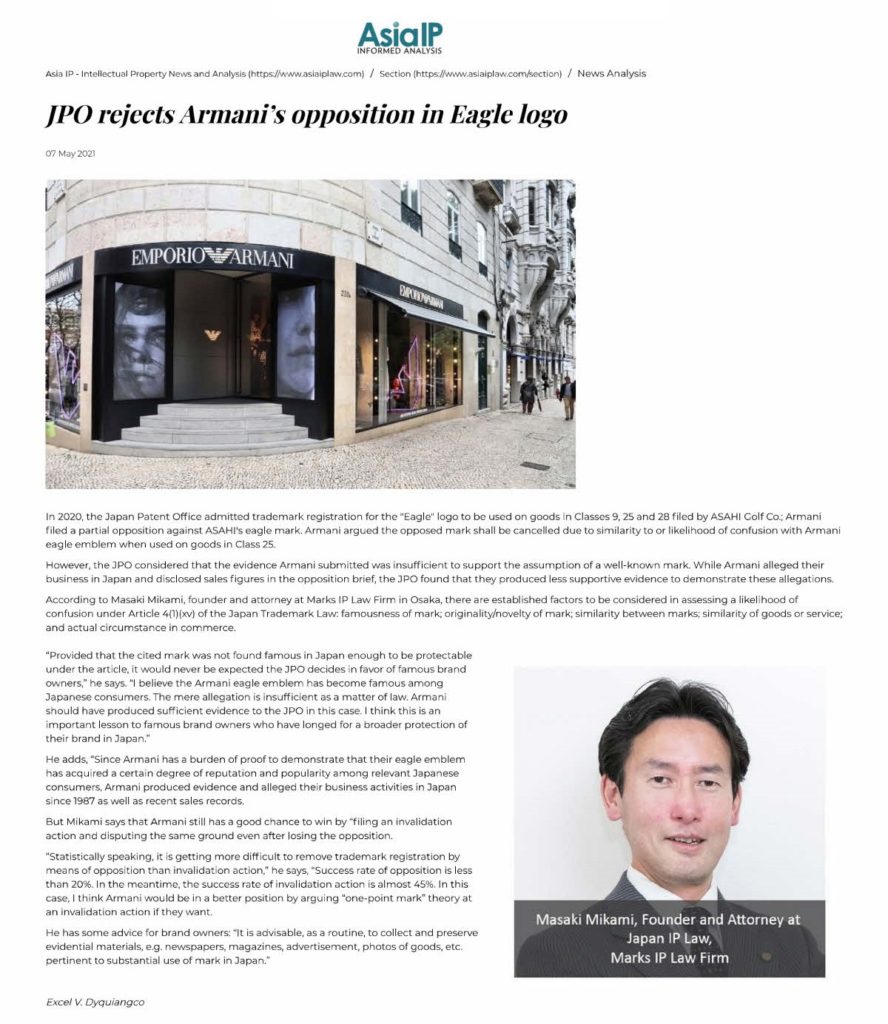マークス英語サイトで紹介した「アルマーニロゴ商標異議申立て事件」(異議番号:2020-900093, 公報発行日:2021年3月26日)について、知財に関するネットメディア「Asia IP Law」より取材を受け、マークスの三上代表弁理士が取材に英語で応じ、ASIA IP LAW.COMサイトに掲載されました。記事全文は、こちら。
[メディア掲載日:2021.5.7]
According to Masaki Mikami, founder, and attorney at Marks IP Law Firm in Osaka, there are established factors to be considered in assessing a likelihood of confusion under Article 4(1)(xv) of the Japan Trademark Law: famousness of mark; originality/novelty of mark; the similarity between marks; similarity of goods or service; and actual circumstance in commerce. “Provided that the cited mark was not found famous in Japan enough to be protectable under the article, it would never be expected the JPO decides in favor of famous brand owners,” he says. “I believe the Armani eagle emblem has become famous among Japanese consumers. The mere allegation is insufficient as a matter of law. Armani should have produced sufficient evidence to the JPO in this case. I think this is an important lesson to famous brand owners who have longed for broader protection of their brand in Japan.” He adds, “Since Armani has a burden of proof to demonstrate that their eagle emblem has acquired a certain degree of reputation and popularity among relevant Japanese consumers, Armani produced evidence and alleged their business activities in Japan since 1987 as well as recent sales records. But Mikami says that Armani still has a good chance to win by “filing an invalidation action and disputing the same ground even after losing the opposition. “Statistically speaking, it is getting more difficult to remove trademark registration by means of opposition than invalidation action,” he says, “Success rate of opposition is less than 20%. In the meantime, the success rate of invalidation action is almost 45%. In this case, I think Armani would be in a better position by arguing the “one-point mark” theory at an invalidation action if they want. He has some advice for brand owners: “It is advisable, as a routine, to collect and preserve evidential materials, e.g. newspapers, magazines, advertisement, photos of goods, etc. pertinent to substantial use of the mark in Japan.”

